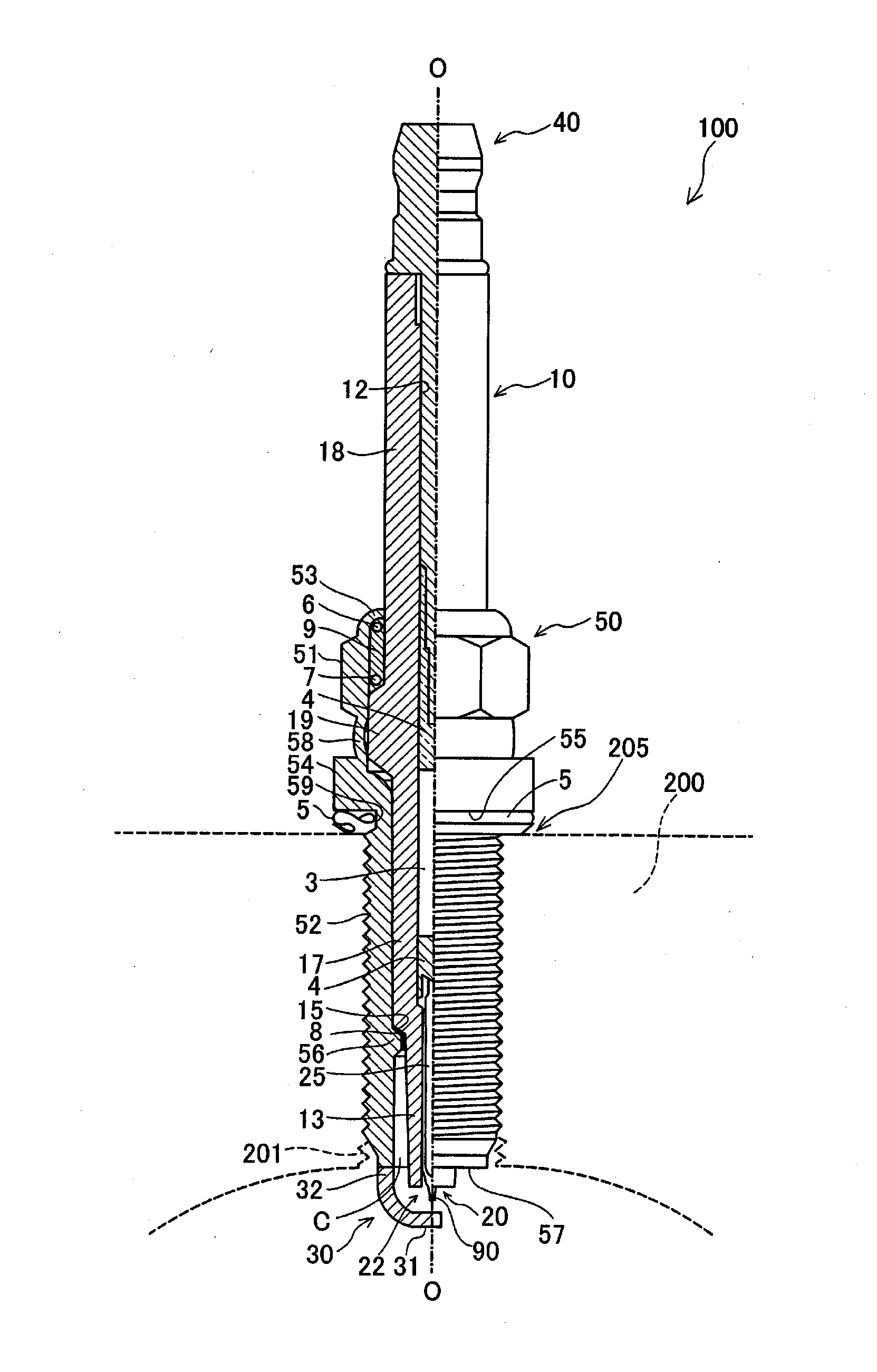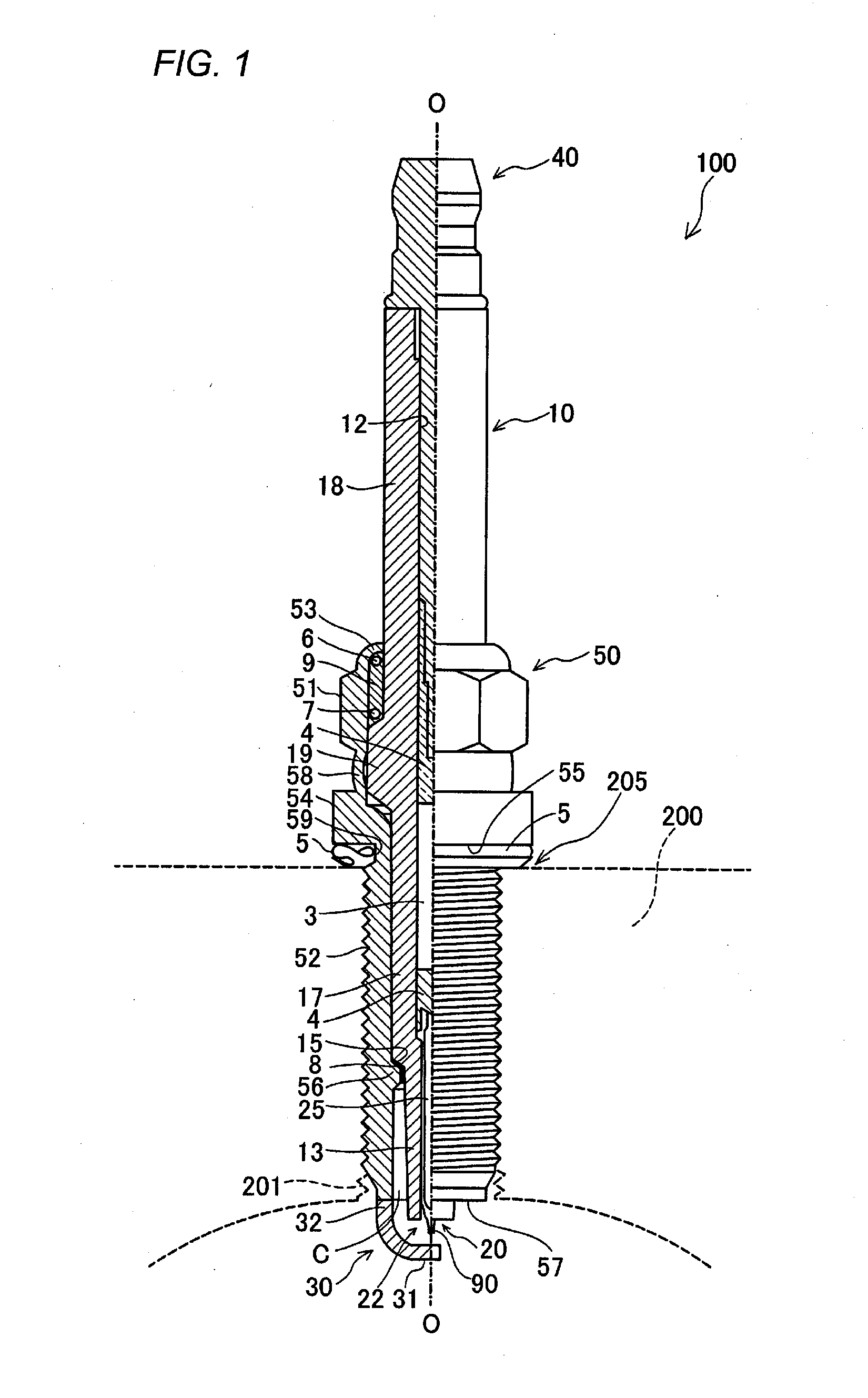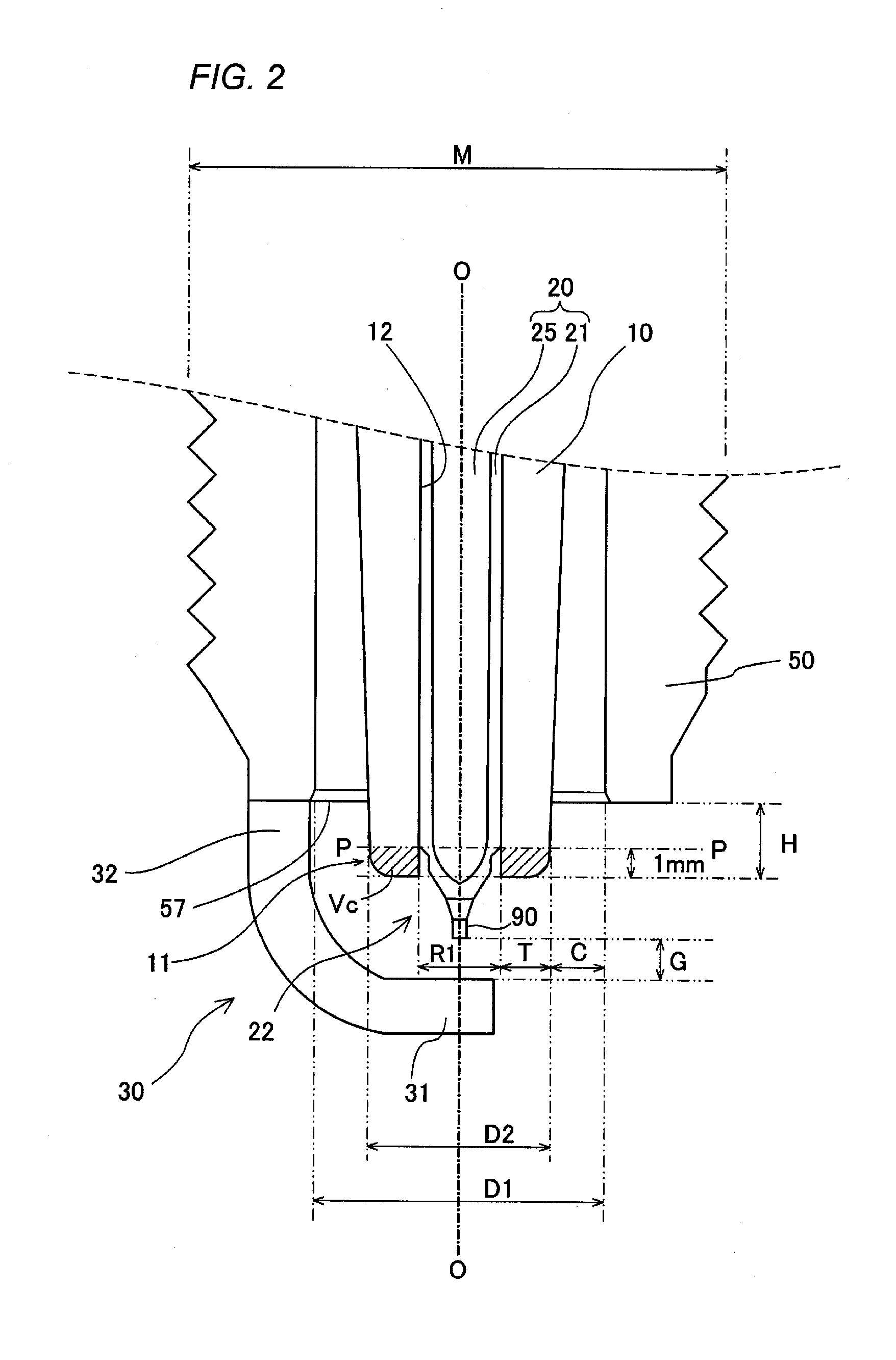Spark plug
a spark plug and plug-in technology, applied in the field of spark plugs, can solve the problems of small diameter and decrease in the frequency of discharge at the normal spark gap, and achieve the effect of reducing the diameter of the spark plug, ensuring the ignition performance, and ensuring the strength of the plug
- Summary
- Abstract
- Description
- Claims
- Application Information
AI Technical Summary
Benefits of technology
Problems solved by technology
Method used
Image
Examples
first example
C-1 First Example
[0072]In a first example, the reason that the projecting amount H is referred to as 2 mm or larger will be described. Firstly, in this first example, a plurality of samples of spark plugs 100 were prepared which had different projecting amounts H by which the front end of the insulator 10 projects and volumes Vc. Specifically, samples were prepared whose volumes were 5, 8, 11, 12 and 13 mm3, and projecting amounts H of their insulators 10 were adjusted from −0.5 mm to 3.0 mm in 0.5 mm increments, whereby a total of 40 different types of samples was prepared.
[0073]In this example, front ends of the insulators 10 of these samples were heated by a burner, and time was measured which was spent until the temperature of the front ends of the insulator 10 had reached 500° C. since the start of the heating. The temperature of 500° C. is a temperature at which carbon sticking to the vicinity of the front ends of the insulators 10 start to be burned off.
[0074]FIG. 5 is a grap...
second example
C-2 Second Example
[0076]In a second example, the reason that the volume of the front end portion of the insulator 10 is referred to as 11 mm3 or smaller and the reason that the clearance C and the spark gap G are specified so as to satisfy the relation (1) will be described. In this second example, firstly, samples of spark plugs 100 were prepared in which diameters D1 (refer to FIG. 2) of holes in front ends of metal shells 50, outside diameters D2 (refer to FIG. 2) of front ends of insulators 10, clearances C (refer to FIG. 2) and spark gaps G (refer to FIG. 2) were varied variously.
[0077]FIG. 6 is a table showing part of dimensions of the samples prepared in this example. As is shown in the table, in the samples prepared in this example, although the hole diameters D1 of the metal shells 50 were all 6 mm, the outside diameters D2 of the insulators 10 were caused to vary from 3.3 mm to 5.2 mm, the clearances C from 0.4 mm to 1.35 mm, and the gaps from 0.6 mm to 1.1 mm. Ratios of c...
third example
C-3 Third Example
[0081]In a third example, the reason that the thickness T of the insulator 10 is specified to 0.7 mm or larger will be described. According to various experiments carried out by the applicant, it has been able to be verified that when the insulator was fouled with carbon, many lateral sparks occurred, whereas when the insulator was not so fouled, many inside sparks occurred. Then, in this third example, the following experiment was carried out to mainly suppress the occurrence of inside spark.
[0082]Namely, an experiment was carried out to study about a spark gap which triggers a inside spark by preparing samples in which thicknesses T of front end portions of insulators 10 were caused to vary in many ways, and adjusting dimensions of spark gaps of the samples so prepared. In this example, spark discharge was made 100 times for each spark gap, and when an inside spark occurred even once, it was judged that an inside spark was triggered with the spark gap. Namely, it ...
PUM
 Login to View More
Login to View More Abstract
Description
Claims
Application Information
 Login to View More
Login to View More - R&D
- Intellectual Property
- Life Sciences
- Materials
- Tech Scout
- Unparalleled Data Quality
- Higher Quality Content
- 60% Fewer Hallucinations
Browse by: Latest US Patents, China's latest patents, Technical Efficacy Thesaurus, Application Domain, Technology Topic, Popular Technical Reports.
© 2025 PatSnap. All rights reserved.Legal|Privacy policy|Modern Slavery Act Transparency Statement|Sitemap|About US| Contact US: help@patsnap.com



